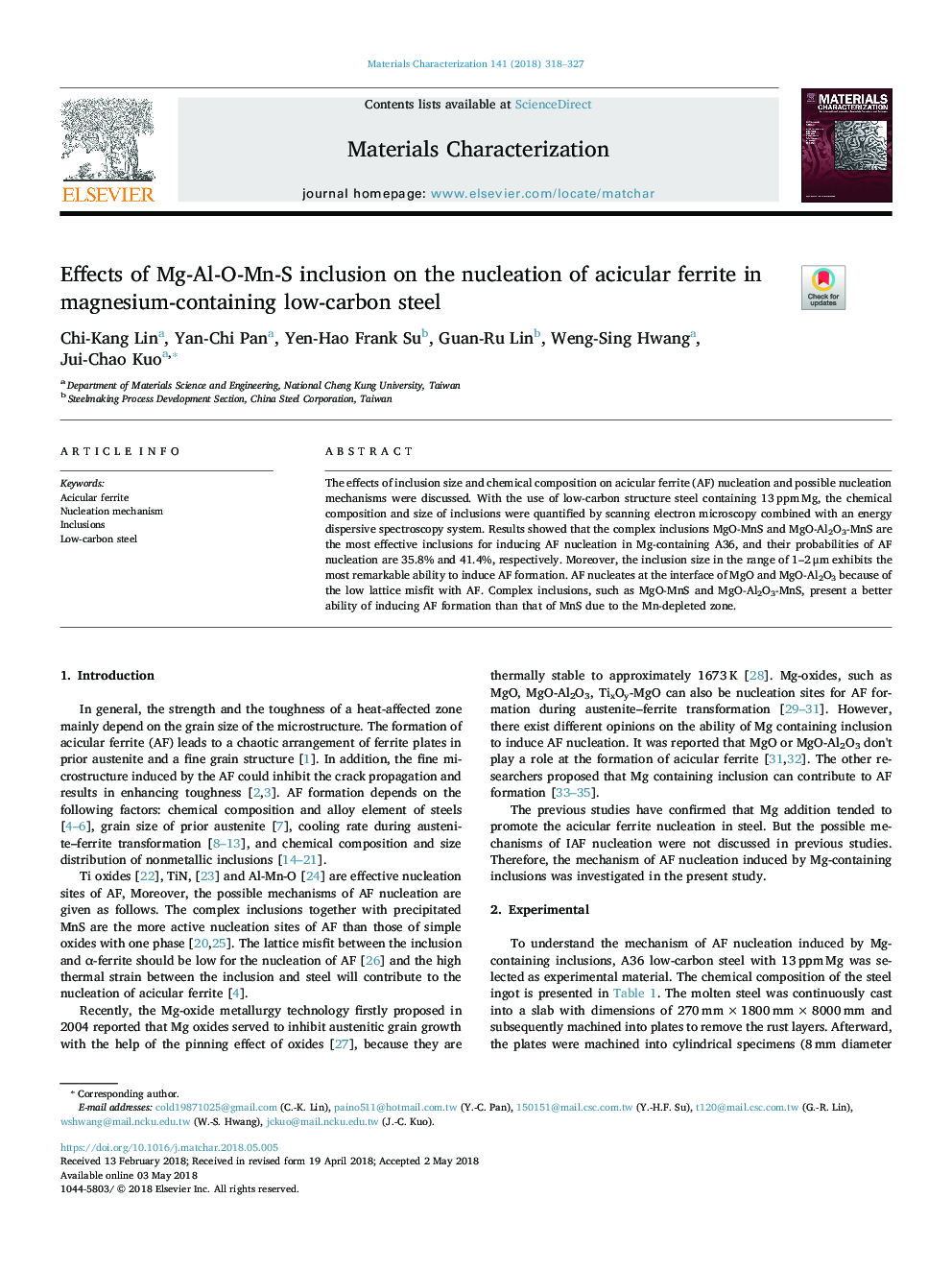| Article ID | Journal | Published Year | Pages | File Type |
|---|---|---|---|---|
| 7969165 | Materials Characterization | 2018 | 10 Pages |
Abstract
The effects of inclusion size and chemical composition on acicular ferrite (AF) nucleation and possible nucleation mechanisms were discussed. With the use of low-carbon structure steel containing 13â¯ppmâ¯Mg, the chemical composition and size of inclusions were quantified by scanning electron microscopy combined with an energy dispersive spectroscopy system. Results showed that the complex inclusions MgO-MnS and MgO-Al2O3-MnS are the most effective inclusions for inducing AF nucleation in Mg-containing A36, and their probabilities of AF nucleation are 35.8% and 41.4%, respectively. Moreover, the inclusion size in the range of 1-2â¯Î¼m exhibits the most remarkable ability to induce AF formation. AF nucleates at the interface of MgO and MgO-Al2O3 because of the low lattice misfit with AF. Complex inclusions, such as MgO-MnS and MgO-Al2O3-MnS, present a better ability of inducing AF formation than that of MnS due to the Mn-depleted zone.
Related Topics
Physical Sciences and Engineering
Materials Science
Materials Science (General)
Authors
Chi-Kang Lin, Yan-Chi Pan, Yen-Hao Frank Su, Guan-Ru Lin, Weng-Sing Hwang, Jui-Chao Kuo,
